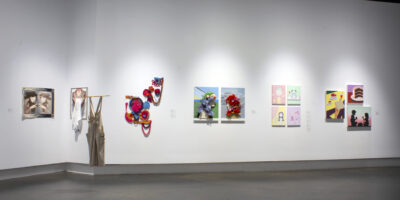Many forms of art, regardless of age, form, medium or creator, eventually reach their end. It’s satisfying, but some bittersweet emotions may result when true attachment has been formed to the piece. Unfortunately, we have reached this point in this column. There are many genres that I have neglected to speak of in these little talks, but there are two that remain that I wish to mention, even if only briefly.
There is the entire realm of performing arts, including stage, musical, and dance performances, which often sees the overlap of many of the previous genres into one big spectacle, with the added difficulties and artistries associated with real-time performance. A play can be seen as a true, three-dimensional film being played before your eyes in an intimate and nearly tangible manner.
The subtle nuances in staging, lighting, props and scene/set design are very similar to that in films, with only some slight changes. Instead planning how things will look on screen and where people’s eyes will be drawn, one must consider all possible viewpoints, making sure that someone from anywhere in the audience will have similar experiences– but unique in the fact that there is something different from each angle.
Then, most obviously, there is the complete change of acting skills required for live performances. Theatre-trained actors and actresses are often given higher acclaim, due to the amount of perfection that they much be able to continuously achieve for each show, in comparison to their filmed counterparts. An actor shooting a film needs a set number of takes to complete a scene, and have a multitude of attempts to get it right, limited only by budget and/or patience of the crew. An actor perfecting his role for stage performance cannot rely on the ‘take it from the top’ method, and must also be willing to do some slight improvisation if anyone makes a significant mistake, such as adapting their dialogue to fit seamlessly with a flubbed line.
Musicals and opera take this a step further by adding a musical component. Not only does this present the opportunity for live orchestras, but the actors have the task of perfecting musical components to their performance as well. Compare this to films that need only find suitable voices for the singing roles. Ballets can be considered on a similar level– actors completely focused on the physical rather than verbal, and portraying the development and emotions of a character solely through motions and complex, beautiful choreographs.
Some theatrical spectacles that might suit someone interested in the field include The Phantom of the Opera, The Lion King, My Fair Lady, and really anything that is currently playing at the Stratford Festival.
The final topic that I want to touch on is a mildly controversial one, in the regards of viewing it as a fine art. Video games are, to many, simply another artistic medium, which at once contains elements of other arts with new twists. Like the novel, there is the need for a gripping story line and emphatic characters that motive the player to continue investing their time in the experience. Like a film, there are audio and visual aspects that the developers can express themselves through. Like a live performance, each member of the audience will often experience the piece of art differently, as they progress through story lines and encounter unique struggles.
This is a very key component– this interactivity that the characters have with the game can make the audience more emotionally invested with the characters simply because they can feel like they are the main character, controlling their actions and fate. Heavy Rain, for the PS3, is unmatched in this respect. It has a film-like quality to it, in the way that the plot line progresses in such a suspenseful and complex manner, but there is such flexibility in the gameplay that makes it even more immersible than other games. It is not hindered by the concept of a single plot line (also seen in films and novels and plays) that play out exactly as planned; it has the ability to change based on the player’s performance. Instead of simply receiving a “Game Over” whenever a mistake is made, the ending to the game adapts, even instigating major character death.
Some of the most highly acclaimed video games have breath-taking artwork as well. A favourite title for the Wii, Okami, illustrates this perfectly, as it possesses a stunning range of artwork, mimicking Japanese ink-style pieces in its characters and settings. Its main gameplay mechanic, creating magical designs using a ‘celestial brush’, propagates the motif of art creating and beautifying the world.
Deep and complex plots can be found in numerous franchises, but often the mark of a great saga is one that speaks a message to its audience, be it profound or more fable-like in nature. The Metal Gear Solid saga has received particular attention in this respect, as many philosophical ideologies are addressed, including the ideas of corrupt governments, thought control, extreme propaganda, and essentially exposing the charade of the ‘good guy, bad guy’ concept in most video games.
Tributes to music in video games can be found anywhere where video game fans lie as well– such iconic games such as Halo, The Legend of Zelda, Final Fantasy and even the aforementioned games all have breathtaking soundtracks, worthy with as much praise as composers for other genres. Journey, one of the most highly acclaimed video games in terms of overall artistry, and one that I have personally yet to play, has already captured my undivided attention with its soundtrack alone (my personal favourite being Apotheosis).
No matter what you take away from any form of art, regardless of what you choose to experience, or how deep you search for meaning and connections, the final line is very simple: try to take the time enjoy that which we are so deeply privileged to have.




Leave a Reply